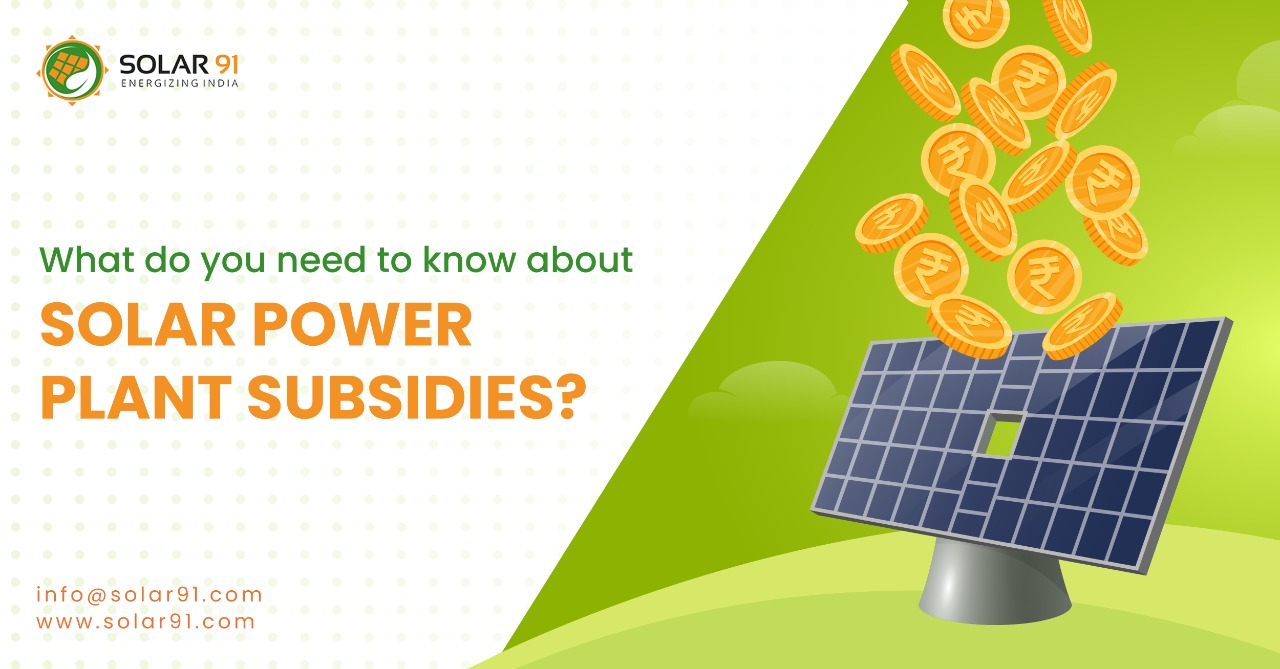What do you need to know about solar power plant subsidies?
Solar Panel is one of your most efficient investments. With this ecological initiative, a fundamental shift has occurred, enabling each of us to make a small but meaningful difference in protecting and caring for the world around us. Additionally, it aids in preventing CO2 emissions into the atmosphere, as opposed to what occurs when energy is obtained from the combustion of non-renewable sources like oil or coal, a concern that is becoming more and more important in all fields and industries.
Solar energy is eco-friendly as it can curb the user’s carbon footprint. However, the main issue is that majority of people cannot afford to bear the cost of installing a solar power plant. And addressing this problem, the government has introduced various subsidies and schemes to encourage people to step up for green initiatives. Let’s understand more about these subsidies offered by the government of India.
What is a solar subsidy?
India is currently one of the top nations in the world for solar panel installations. The government of India has taken a number of steps to promote the usage of solar panels in both the home and commercial sectors. To increase the effectiveness of this project, the government launched the solar subsidy programme to install solar panels as financial assistance. This self-consumption subsidy enables you to save between 40% and 50% on your installation.
Anyone who wishes to install a solar panel in their home is eligible to apply for these funds, which are primarily intended for installations in single-family homes or neighborhood communities. Let’s talk about some other topics, such as the advantages of solar systems for homes in the Indian Government Subsidy.
What are the benefits of solar subsidy?
- Utilizing the solar subsidy provided by the government has a number of advantages. Here are a few examples:
- It costs a lot of money to set up a solar system. In such circumstances, solar subsidies offer financial assistance and relieve your financial burden.
- Depending on how many kW of electricity the solar system is expected to produce, different amounts are provided by the government. For example, the solar panel subsidy is 40% of the overall cost for solar panels up to 3kW, and 20% for solar panels between 4kW and 10kW. You select the subsidy based on your needs and requirements.
Utilize the subsidies to build your rooftop solar system. On the annual electricity bills, you can receive an additional incentive of Rs. 1 per unit for the total solar power you produce.
How much is the subsidy?
- 40% for capacity up to 3 kilowatt ‘peak’
- 20% for capacity of more than 3 kW and up to 10 kilowatt ‘peak’
- 20% for GHS/RWA capacity up to 500 kilowatt ‘peak’. It is limited to 10 kW per house and a total of up to 500 kilowatt ‘peak’.
How to avail of the subsidy?
In central terms, the benefits are referred to as CFA or Central Financial Assistance. Customers who want to profit from this government programme must contact the local Power Distributing firms (DISCOMs), as it will be executed through the state (DISCOMs).
You can submit an application for the installation of solar panels online or offline, or you can get in touch with the relevant power distribution company (DISCOM) in your state.
You should choose the best firm for yourself if you plan to install a solar panel on your roof to produce solar power. Installing solar panels should be financially worth it.
Why does the government of India provide subsidies?
Firstly, using solar energy lowers reliance on and consumption of non-renewable natural resources like coal and other fuels. It is also a clean, renewable source of energy. It is a cleaner, more environmentally responsible form of energy and does not cause pollution.
Secondly, offering subsidies will motivate property owners to install solar panels for their electricity needs.
Energy may be saved significantly by making energy requirements self-sufficient in electricity. Each day, the commercial and industrial sectors use a lot of electricity. Therefore, you can meet the energy needs of these sectors by diverting the electricity saved from the home sector to the commercial one.
Conclusion
By the end of December 2024, the Indian government hopes to have rooftop solar systems installed at residences that can generate 4 GW of solar energy. The government is even planning to stop offering a solar subsidy once this goal is reached.
Why not install rooftop solar panels now as solar energy is the energy of the future and you will eventually do so? Take the advantage of the opportunity to receive financial assistance from the government in the form of a subsidy while it is still available.

